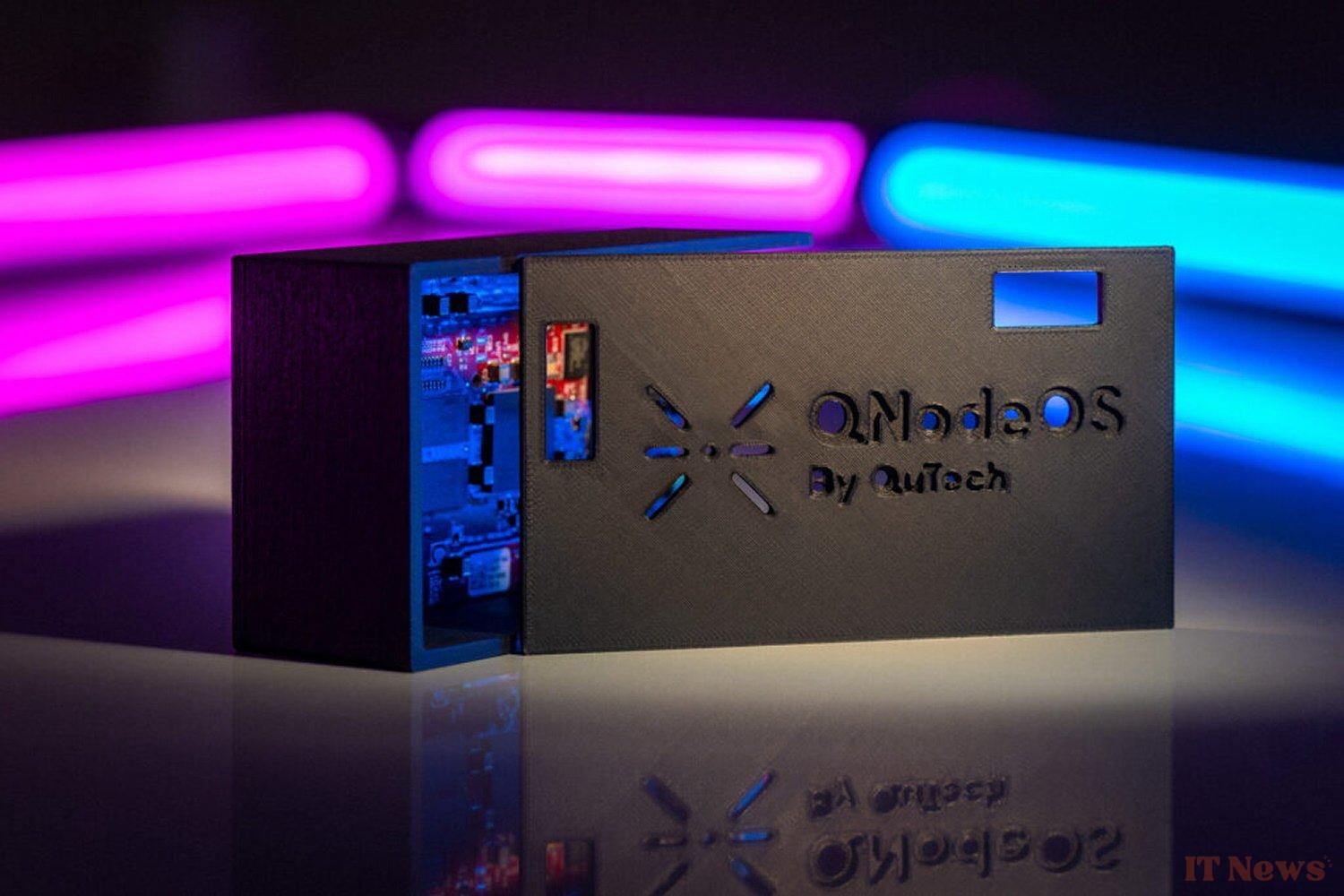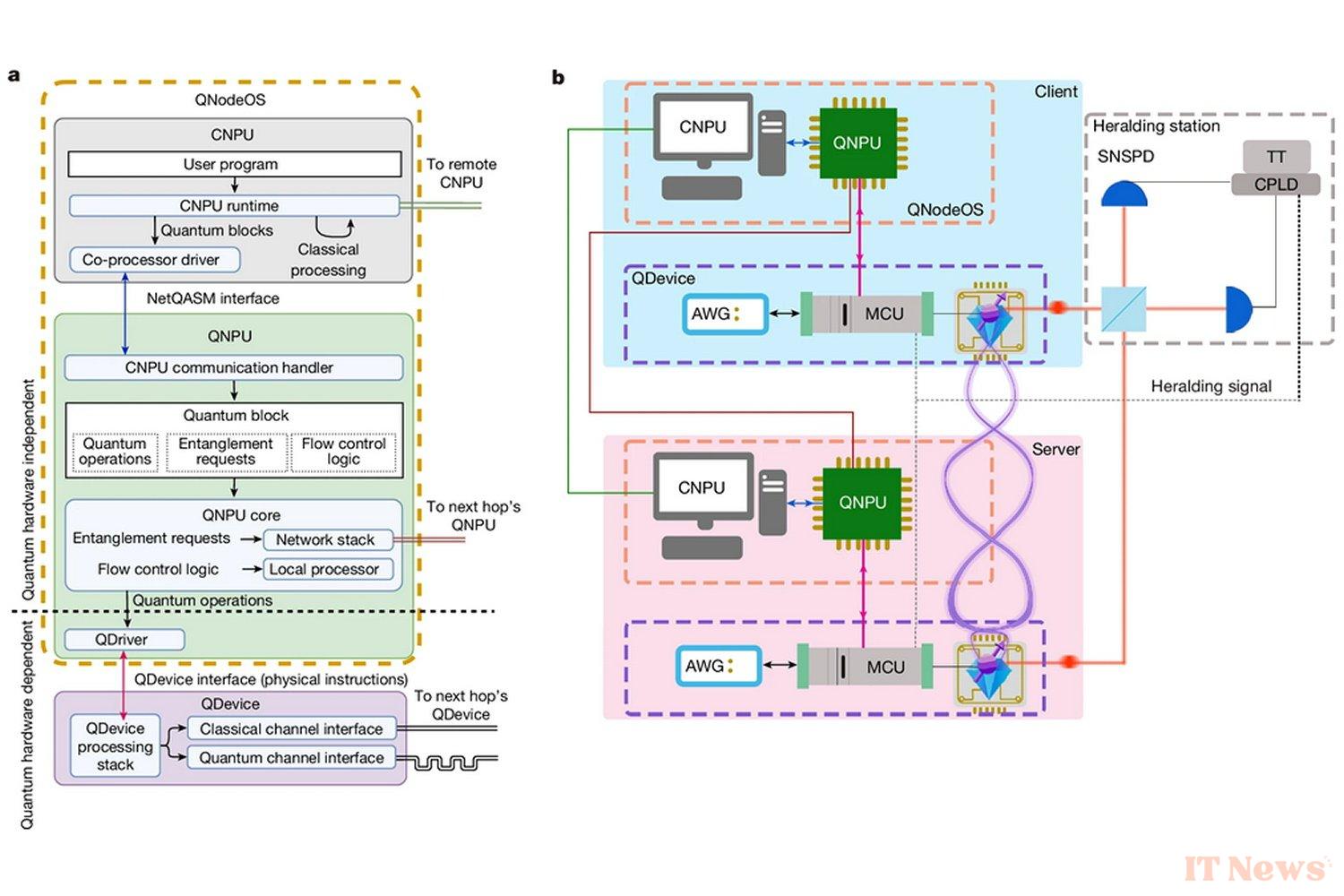Often described as the next technological revolution, quantum computing remains confined to research laboratories for the time being. Its widespread adoption is still a distant goal, but the building blocks that will enable the technology's mass adoption in the future are gradually coming together. An international team of researchers from the Quantum Internet Alliance has developed the first operating system designed exclusively for quantum networks, in order to connect different quantum computing nodes together and, perhaps, begin to lay the foundations for the Internet of tomorrow.
QNodeOS: Interconnecting quantum devices
Until now, attempts to demonstrate quantum network applications have mainly relied on custom software solutions, requiring an intimate understanding of the particularities of each hardware platform and developed specifically for each particular experimental setup. In contrast, the QNodeOS network operating system developed by researchers aims to provide an abstraction layer between the underlying hardware and software applications. Similar to operating systems like Windows, Android, or Linux, which allow users to interact with a conventional computer without having to know the details of how the processor or memory works, QNodeOS hides the complexity of the quantum hardware and underlying communication protocols, greatly simplifying application development and execution. on this type of network.
QNodeOS, however, was specifically developed to manipulate and coordinate information encoded in qubits (or quantum bits) within a distributed network infrastructure. It is therefore not directly intended to administer the internal resources of an individual quantum computer, but rather focuses on managing and coordinating interactions between nodes in a quantum network. In other words, its main role is to facilitate the coordination and exchange of information between various quantum devices, in order to take advantage of the computing power distributed across multiple interconnected quantum processors.
A quantum and multitasking operating system
Fully programmable, QNodeOS will allow developers to design and run applications at a high level of abstraction, focusing on the logic and functionality of their programs rather than the intricacies of quantum manipulation at the physical level. This operating system will therefore allow a much larger community of developers to access quantum network technology, without the need for in-depth expertise in experimental quantum physics to design and deploy applications.
QNodeOS is also multitasking to optimize the use of the limited hardware resources of quantum devices: multiple applications or tasks can be run simultaneously on a single quantum network node, maximizing the efficiency and performance of the available hardware. To do this, the operating system divides each computing node in a quantum network into three logical components: a classical network processing unit (or CNPU), a quantum network processing unit (QNPU), and the quantum device itself.
Composed of common computer hardware (in particular a processor and a network interface), theCNPU is responsible for executing classical computer code. It orchestrates the startup of programs, the execution of binary parts of the code, and communication with the CNPUs of other nodes in the network. It can also host a user environment for storing results. The QNPU is the heart of the execution of quantum code blocks. It interprets quantum instructions (initializing qubits, applying quantum gates, measurements and generating entanglement, etc.), manages the quantum device’s resources, and maintains the execution state of quantum programs.
The physical quantum hardware itself (or QDevice) is responsible for manipulating and storing qubits, applying quantum operations, and generating entanglement with other nodes on the network, while communicating to the QNPU the quantum operations it can perform and the number of available qubits.The QNodeOS architecture finally introduces the concept of QDriver, i.e. the hardware abstraction layer itself. This “driver” is responsible for translating quantum operations, expressed in an intermediate programming language called NetQASM (Quantum Network Assembly Language), into physical instruction sequences specific to the underlying quantum device.
The researchers have already conducted demonstrations illustrating QNodeOS’s ability to work with different types of quantum hardware. The next significant step will be the integration of this operating system into QuTech's Quantum Network Explorer, a quantum network demonstrator designed to provide wider access to this technology.





0 Comments